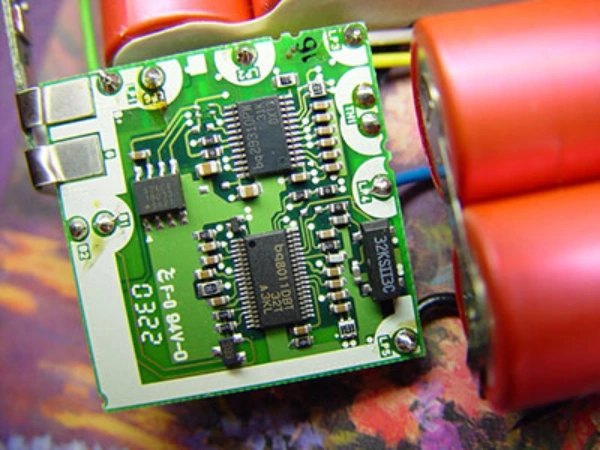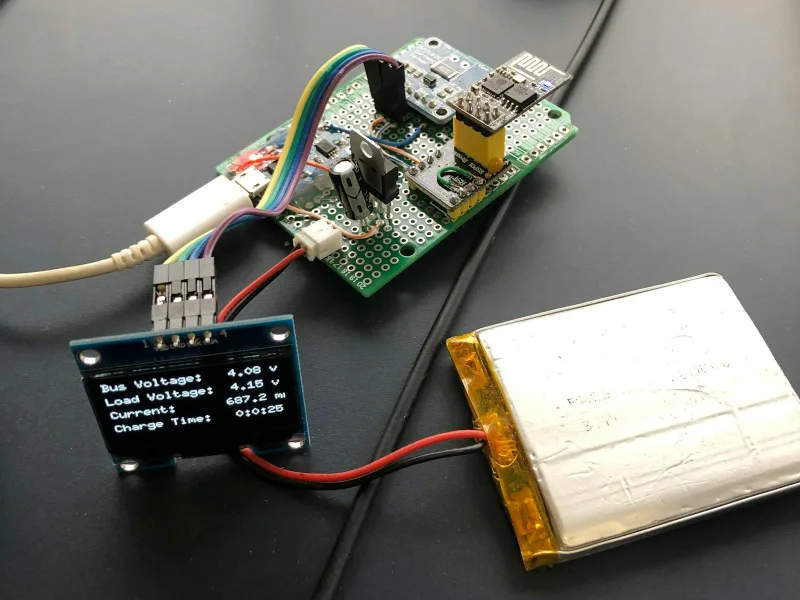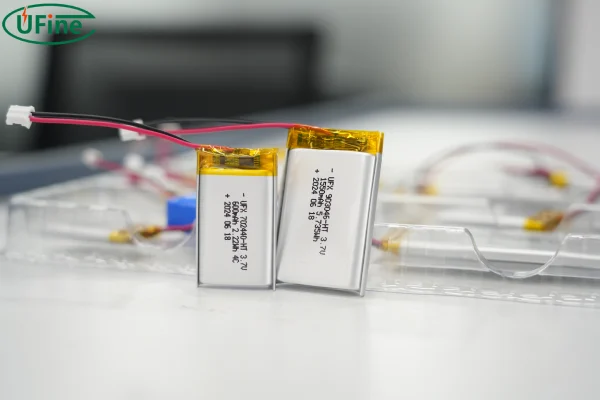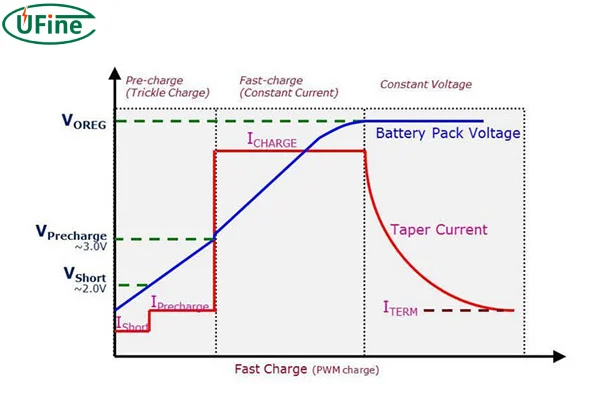Many digital devices now use lithium polymer batteries. How to charge a lipo battery? How to maintain a lipo battery? This article introduces knowledge related to lipo battery charging.
Part 1. How to charge lipo batteries?
Polymer lithium batteries generally refer to polymer lithium-ion batteries, developed based on liquid lithium-ion batteries. Many electronic devices now use polymer lithium batteries. The correct charging method for polymer lithium-ion batteries is as follows.
- When charging lithium polymer batteries, choosing a special charger from the lithium battery manufacturer is best. Otherwise, it will affect or damage the lithium polymer battery.
- It is best to charge the polymer lithium battery slowly. Try to avoid fast charging. Repeated charging and discharging will also affect the life of polymer lithium batteries.
- If the battery is not used for more than seven days, the polymer lithium battery should be fully charged before use because polymer lithium batteries have self-discharge.
- The longer the charging time of a polymer lithium battery is not, the better. Ordinary chargers should stop charging immediately when the lithium polymer battery is fully charged. Otherwise, the polymer lithium battery will affect performance due to heat or overheating.
- After charging the lithium polymer battery, avoid leaving it on the charger for more than 10 hours.
Part 2. How to charge a new lithium polymer battery?
- Under normal circumstances, the power of a new polymer lithium battery will not be too much or too little. Do not allow the lithium polymer battery to completely discharge when charging for the first time.
- If the polymer battery is charged for the first time in summer, the charger may heat up quickly, and the temperature will be very high. Therefore, do not place the charger on objects prone to heat and burn.
- Be sure to use a dedicated lithium battery charger when charging the polymer battery for the first time. Pay attention to matching the parameters of the battery cells used.
- Polymer batteries must be stored and charged. And charge and discharge once every three months. Do not charge the polymer lithium battery using a charging current that exceeds the maximum charging current in the specification;
- If you want to maintain the power of the lithium polymer battery, it is best to completely discharge it and recharge it once every month. This helps the battery retain its charge and last longer.
Part 3. How long does it take to charge a lipo battery?
The overcharge protection circuit will activate when the lithium battery is fully charged. Then, cut off the charging power. The battery will begin to discharge. After the battery is discharged for some time, it starts to charge again, charging and discharging alternately. Charging and discharging back and forth like this will shorten the battery’s charging cycle.
Generally, lithium batteries will be fully charged in 2-3 hours. After 90%, it is a slow charging process, and charging for up to 1-2 hours is enough. That is to say, charge for 4-5 hours, not more than 6.
In addition, mobile phones or chargers with lithium polymer batteries will automatically stop charging after the battery is fully charged. No so-called “trickle” charge lasts for more than 10 hours with nickel chargers.
In other words, it is useless if your lithium battery is still connected to the charger after it is fully charged.
And none of us can guarantee that the characteristics of the battery’s charge and discharge protection circuit will never change and the quality is foolproof. So your battery will be teetering on the edge of danger for a long time. This is another reason why we oppose long charging.
Part 4. Charging current and charging voltage
Charging current and charging voltage must not exceed the following standards. Exceeding the specified value may cause damage to the charge and discharge performance, mechanical properties, and safety of the battery cell. It may even cause battery heating and electrolyte leakage.
- Lithium-ion polymer battery chargers must be capable of constant current and constant voltage charging;
- The charging current of a single battery during charging must be below 1C 5A;
- The temperature range during charging is 0~+45℃;
- The voltage of a polymer lithium battery cannot exceed 4.23V when charging.
Part 5. How to maintain lithium polymer batteries?
- Lipo charge voltage: Newly purchased batteries should be fully charged before use. The charging voltage is generally between 4.16v and 4.2v. Do not exceed the voltage of 4.23v. The battery needs to be discharged after it is fully charged. During the discharge process, it is best to maintain a small or medium current for discharge.
- When using the battery, try not to overcharge or discharge it. Don’t let the battery run out easily. And don’t charge it for too long.
- When the lithium polymer battery bulges and leaks, a chemical reaction occurs inside the battery, and the battery performance deteriorates. If the battery is charged or discharged at this time, the battery may further bulge and burn. Therefore, charging
- or discharging if the battery bulges or leaks is forbidden.
- If there is a collision during use, please remove the battery. Carefully check whether the battery and connector are normal, just in case. Pay attention to safety when taking them out to avoid burning your hands.
- If it is not used long, please store it at 40% to 60% of the charging capacity. When the battery is too low, it may cause over-discharge due to self-discharge. Since lithium-ion batteries will naturally age when not in use, you should purchase them based on actual needs and avoid purchasing too much.
Part 6. The difference between a lipoly battery and a lithium battery?
The electrolyte is the main difference between lithium polymer (LiPo) batteries and lithium batteries. LiPo batteries use a gel-like polymer electrolyte, while traditional lithium batteries use a liquid electrolyte.
Part 7. FAQs
-
Should I charge the LiPo battery to 100%?
It is not necessary to charge LiPo batteries to 100% regularly. Partial charging between 20-80% is recommended for better battery lifespan and safety. -
What is the difference between lithium polymer battery and lithium battery?
The main difference between lithium polymer (LiPo) batteries and lithium batteries is the electrolyte. LiPo batteries use a gel-like polymer electrolyte, while traditional lithium batteries use a liquid electrolyte. -
What charger should I use to charge my LiPo battery?
To charge a LiPo battery safely, use a charger specifically designed for LiPo batteries. These chargers have built-in safety features and charging profiles optimized for LiPo chemistry. -
What is lipo charge voltage?
The typical charge voltage for LiPo batteries is 4.2 volts per cell. However, it is essential to refer to the manufacturer’s specifications and guidelines for the specific voltage range and charging parameters of your LiPo battery.
Related Tags:
More Articles

How to Choose the Best Floor Scrubber Battery for Commercial Cleaning?
Selecting the ideal floor scrubber battery ensures a long runtime, rapid charging, and minimal maintenance for efficient commercial cleaning operations.
Battery for Blower vs Battery for Leaf Vacuum: Which One Should You Choose?
Battery for blower vs leaf vacuum—learn the key differences in power, fit, and runtime to choose the right battery for your outdoor tool needs.
How to Choose the Right Battery for Blower?
Choosing the right blower battery? Consider voltage, capacity, chemistry & usage. This guide helps match the best battery for peak performance.
How to Choose the Best Insulated Battery Box for Lithium Batteries?
Choosing the Best Insulated Battery Box for Lithium Batteries? Discover key factors such as size, material, and safety for optimal protection and performance.
7 Critical Elements on a Lithium Battery Shipping Label
What must be on a lithium battery shipping label? Learn 7 key elements to ensure safety, legal compliance, and correct handling across all transport modes.







